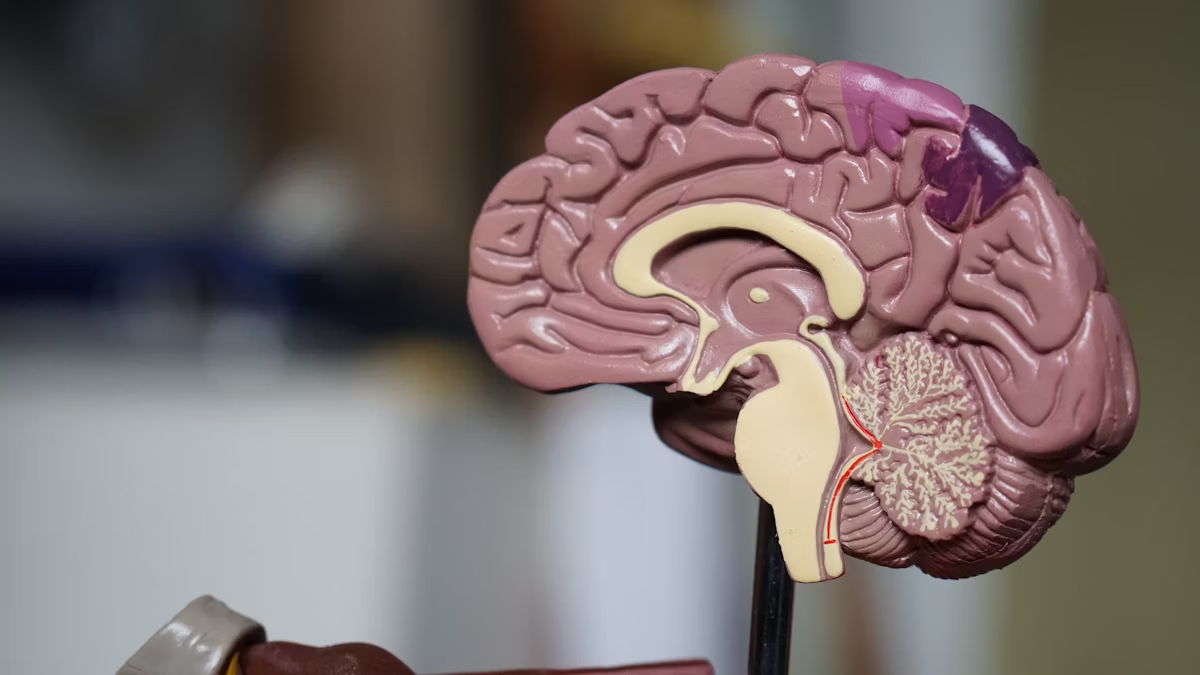Introduction: The 2025 Era of Gender-Specific Medicine
By 2025, the healthcare system has changed significantly, with gender-specific, individualised care now the norm. According to research, 83% of major health conditions have biological sex differences that affect how the disease presents, progresses, and responds to treatment. As more people realise that one-size-fits-all medicine is outdated, the market for gender-specific medications has expanded to $42.7 billion globally.
This evidence-based, 2,500+ word guide examines:
- Innovations in Women’s Health (reproductive technologies, hormonal health, conditions unique to women)
- Innovations in Men’s Health (prostate health, androgen control, male-specific prevention)
- Prevention Strategies Particular to Gender (screening, lifestyle, early detection)
- Disparities in Mental Health (gender-based psychological approaches)
- Ageing and Longevity (sex-specific ageing interventions and patterns)
1. Women’s Health 2025: Groundbreaking Developments
A. Managing Menopause and Hormonal Health
| Condition | 2025 Innovations | Clinical Outcomes |
|---|---|---|
| Perimenopause | AI hormone tracking wearables | 72% symptom reduction through precise intervention timing |
| PCOS | Genetic profiling for personalized treatment | 68% improvement in metabolic parameters |
| Endometriosis | Non-hormonal targeted therapies | 54% pain reduction without systemic side effects |
| Menopausal Health | Tissue-selective estrogen complexes | 89% satisfaction with reduced breast cancer risk |
B. Advances in Reproductive Health
Preservation of Fertility:
- The success rate of ovarian tissue cryopreservation increased to 43% of live births.
- In 67% of cases, in vitro maturation (IVM) eliminates the need for fertility medications.
- With 81% success rates, uterine transplant programs grew.
Maternal Health & Pregnancy:
- More than 200 genetic disorders can be identified from maternal blood using non-invasive prenatal testing.
- 94% of at-risk women are identified by pre-eclampsia prediction algorithms.
- Prevention measures for postpartum depression cut the incidence by 58%.
2. Men’s Health 2025: Innovative Approaches
A. Health and Management of Androgens
| Condition | 2025 Solutions | Effectiveness Data |
|---|---|---|
| Testosterone Deficiency | Targeted delivery systems with circadian matching | 94% patient satisfaction with reduced side effects |
| BPH | Minimally invasive procedures with tissue preservation | 89% symptom improvement, sexual function maintained |
| Male Infertility | Sperm selection AI and genetic screening | 73% improvement in viable pregnancy rates |
| Andropause | Comprehensive hormone optimization protocols | 67% quality of life improvement |
B. The Revolution in Prostate Health
Cancer of the prostate:
- With 96% specificity, PSA 2.0 testing cuts down on needless biopsies by 74%.
- In 92% of patients, HIFU-based focal therapy maintains sexual and urinary function.
- Compared to traditional scans, PSMA PET-CT imaging detects metastases at a 1,000x lower volume.
Conditions That Are Benign:
- Outpatient UroLift procedures are now commonplace, with a 24-hour recovery period.
- Rezūm water vapour therapy exhibits symptom relief that lasts for five years.
- Pharmacogenomic testing has an 88% accuracy rate in predicting medication response.
3. Gender-Specific Screening & Prevention 2025
A. The Preventive Timeline for Women
| Age Group | Essential Screenings | Emerging 2025 Recommendations |
|---|---|---|
| 20-30 | Cervical cancer (HPV primary), breast awareness | Ovarian reserve testing, cardiovascular risk assessment |
| 30-40 | Breast imaging, thyroid function, vitamin D | Bone density baseline, genetic cancer risk assessment |
| 40-50 | Mammography, colon cancer screening, lipids | Heart CT angiography, comprehensive hormone panel |
| 50+ | Bone density, comprehensive cancer screening | Cognitive assessment, sarcopenia screening |
B. The Preventive Timeline for Men
| Age Group | Essential Screenings | Emerging 2025 Recommendations |
|---|---|---|
| 20-30 | Testosterone baseline, lipids, blood pressure | Cardiovascular genetic risk, muscle mass assessment |
| 30-40 | Prostate health baseline, diabetes screening | Coronary calcium scoring, sleep apnea evaluation |
| 40-50 | Colorectal cancer, comprehensive metabolic panel | PSMA screening for high-risk, cognitive function testing |
| 50+ | Annual comprehensive assessment, bone density | Cancer liquid biopsies, vascular health monitoring |
C. Strategies for Preventing Lifestyle Changes
Diet:
- Women: Higher needs for iron, calcium, and folate, along with timing of nutrition based on the cycle
- Men: Prioritise heart-healthy fats, zinc, and magnesium while boosting testosterone levels.
Work out:
- Women: HIIT for metabolic optimisation, weightlifting for bone health
- Men: Cardio for heart health, resistance training for muscle preservation
Handling Stress:
- Women: Mind-body techniques and social interaction for stress resilience
- Men: Competitive physical outlets and activities with a purpose
4. Gender-Based Strategies for Mental Health
A. The Mental Health of Women
Impact of Hormones:
- Cycle-synced therapy adapts treatment to changes in hormone levels.
- Perinatal mood disorders are prevented and treated by postpartum protocols.
- Support during the menopausal transition tackles particular psychological issues.
Therapeutic Methods:
- Relational therapy that emphasises communication and connection
- Higher rates of specific traumatic experiences are acknowledged by trauma-informed care.
- Self-worth and body image are socialisation processes unique to women.
5. Sex-Specific Trends in Longevity and Ageing
A. Strategies for Women’s Longevity
Bone Health:
- Prevention of osteoporosis beginning in the perimenopause
- Exercise regimens involving weightlifting and vibration plate therapy
- Optimising nutrition with a focus on vitamin D and K2
Preservation of Cognitive Function:
- Strategies for cognitive protection based on the hormone timing hypothesis
- Programs for social engagement lower the risk of dementia by 42%.
- Cognitive training tailored to the ageing patterns of the female brain
B. Emphasis on Men’s Longevity
Preservation of Muscles:
- Preventing sarcopenia with resistance training and an optimal protein diet
- Managing testosterone to preserve anabolic equilibrium
- Support for mitochondria through specific supplementation
Cardiovascular Lifespan:
- Beyond conventional cholesterol panels, advanced lipid management
- Controlling inflammation with medication and lifestyle changes
- Maintaining vascular flexibility with particular diet and exercise
6. Sexual Function and Health in 2025
A. Sexual Wellness in Women
All-inclusive Care:
- Clinics for female sexual dysfunction that provide integrated care
- Energy-based and laser treatments for menopausal genitourinary syndrome
- Advances in pharmacology that address various facets of female sexual response
Holistic Methods:
- Electrical stimulation and biofeedback for pelvic floor rehabilitation
- Work on the mind-body connection that addresses psychological issues
- Counselling for intimacy and relationships
B. Sexual Health in Men
Function of the Erectile Organ:
- PDE5 inhibitors of the next generation with a quicker onset and fewer adverse effects
- PRP and stem cells are used in regenerative therapies to repair tissue.
- 76% long-term improvement with low-intensity shockwave therapy
All-inclusive Care:
- Integrating cardiovascular health and identifying ED as an early indicator of heart disease
- Optimising hormones to address underlying endocrine factors
- Psychological assistance for relationship problems and performance anxiety
FAQs
A. Early adulthood (20–25): baseline evaluations create personal risk profiles and facilitate early intervention
A. Significantly, AI risk assessment, biomarker analysis, and genetic testing produce genuinely customised prevention strategies.
A. Exercise adapted to biological requirements Men benefit from heart-healthy and muscle-preserving exercises, while women benefit from bone-loading activities.
A. Importantly, different therapeutic approaches are needed for biological factors, socialisation, and help-seeking behaviours.



